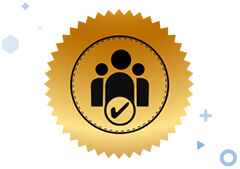Main Responsibilities:
1. Analyze the scope of business requirements and propose IT business solutions. Perform business process re-engineering and implementation of software systems
2. Identify, create and facilitate process design changes by conducting business and systems process analysis and design; focusing on quality improvement and data management; ensuring data is reliable and valid; developing process improvements; integrating new systems and processes with existing ones; and partnering with internal and external customers to ensure the system provided meets the long-term business strategies.
3. Create and maintain business requirement documents, process flows, uses cases and user stories for business and development teams.
4. Understand and negotiate the needs and expectations of multiple stakeholders.
5. Candidate should be well versed in gathering data from various sources and be able to correlate related information for various data discoveries and analyses.
6. Ability to catalog and correlate new enhancements with existing product features set and conduct Fit/Gap analysis and impact assessment of the proposed changes.
7. Work with product owners and technical managers to establish development efforts and implementation schedules.
8. Maintain the quality of all documents/data to assure the integrity of the product.
9. Identify and resolve product issues and planning of change requests for future release management.
10. Assist in product assessment, risk identification and analyzing product benefits.
11. Provide regular status and present progress reports to management for self/team assigned tasks and/or sprint.
12. Assess business processes and system inefficiencies and suggest recommendations for improvement and feature enhancement.
13. Identify ways to increase adoption and customer satisfaction and reduce user complaints.
14. Provide leadership to team members and peers by collaborating with others; articulating ideas and viewpoints to senior management, peers and subordinates; identifying and initiating projects; managing resources; driving the resolution of issues; and holding self and team accountable for results.
15. Developing strategies and procedures to improve the efficiency and quality of business analyst practices and deliverables.
Required Skill Set:
- Strong analytical, interpersonal skills and problem-solving abilities to deal with cross-functional team issues.
- Good understanding of the software development cycle.
- Proven ability to solve problems creatively.
- Ability to identify, track and mitigate the technical, functional and integration risks.
- Self-sufficient and able to perform most of the tasks involved in the role with limited assistance from peers, management, and support services.
- Good mentoring and people management skills.
- Strong follow-up abilities with relevant stakeholders to fulfill any dependent task or supply pending information or documentation.
- Use of technology to ensure all parties are informed on schedule, progress, issues, and ownership in the project.
- Experience using Click UP/ JIRA / Atlassian will be preferred.
- An understanding of the business processes of trade, logistics, supply chain, E-commerce, and financial payments will be an added advantage.
- Knowledge of Quality Standards in documentation and technology will be an added advantage.
نوکری کی تفصیلات
Pakistan Single Window
Pakistan Single Window (PSW) is an ICT-based system in Pakistan providing a single window for trade. PSW is a facility that allows parties involved in trade and transport to lodge standardized information and documents at a single-entry point to fulfill all import, export, and transit-related regulatory requirements. If information is electronic, then individual data elements need to be submitted only once. PSW will connect relevant government departments with each other and with economic operators like importers, exporters, customs agents, shipping agents, transporters etc, in Pakistan for efficient management of cross border trade. It will provide the ease and transparency in achieving compliance with relevant regulatory requirements, through an on-line facility, that will intelligently handle the information for each transaction without the need to provide same information more than once or to physically visit such government departments. Pakistan has committed to implement various provisions of World Trade Organization’s (WTO) Trade Facilitation Agreement that includes implementation of a National Single Window (NSW) system before February, 2022. Pakistan also needs PSW implementation to overhaul management of its external trade for reducing time, cost and complexity involved to improve its position in various global rankings on competitiveness and ease of doing business. Guiding vision and mission objectives: VISION: Pakistan will establish a world-class automated hub by 2022, offering services and creating efficiencies, to reduce cross border trade related costs, time and complications for improved trade facilitation and compliance. MISSION: Improve cross-border trader processing by providing centralized ICT based services, simplified processes, effective and reliable automation, harmonized data exchange and risk-based selectivity in enforcement of government’s regulations.

















